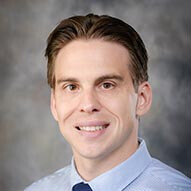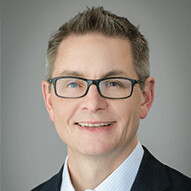Dystonia in children
At Children's Health℠, we offer the latest treatments to help children with dystonia live pain-free lives. With proper care and treatment, we can often keep symptoms from getting worse, and for many patients, we can return their movements to normal.
What is dystonia in children?
Dystonia causes twisting, painful muscle contractions (the feeling that muscles are getting tight). The muscle or muscle groups have a tough time relaxing once the contractions start.
Abnormal brain signals trigger these muscles to stiffen and twist painfully. Dystonia causes the body to uncomfortably contort in response to voluntary movements, such as walking, resting, writing or talking. When muscles can’t relax, it leads to cramping. The condition can range from mild to severe.
What are the different types of dystonia in children?
There are two main types of dystonia:
Primary dystonia is a genetic (inherited) disorder that occurs without a known brain injury.
Secondary dystonia is the most common form in children and is a result of a brain injury, like cerebral palsy (CP) or stroke.
What are the signs and symptoms of dystonia in children?
Dystonia happens when muscles that should normally trade off (push-then-pull) activate at the same time. Dystonia can affect one or more areas of the body. The most common areas affected are the feet and legs, hands, and tongue.
Other areas include:
Eyelids
Face
Forearm
Jaw
Neck
Throat muscles
Torso
Dystonia is usually triggered by a specific voluntary movement, such as writing, walking or speaking. Children with dystonia may feel that their body part is pulling in an abnormal direction or stuck in an abnormal position.
How is dystonia in children diagnosed?
Physical exam - Dystonia is diagnosed by a physical exam with one of our pediatric dystonia experts. During the exam, your child’s doctor will try to trigger the symptoms of dystonia by challenging them with several movement tasks.
Blood tests
MRI - Magnetic resonance imaging tests, which take detailed images of your child’s organs and tissues, can support the diagnosis, but the physical exam is key.
What causes dystonia in children?
Dystonia can be caused by:
An interruption or restriction of the blood supply to the brain (stroke)
A side effect of medication
Chemical or heavy metal poisoning (such as carbon monoxide or manganese)
Damage to the deep structures within the brain that are primarily responsible for motor control (the basal ganglia)
Lack of oxygen to the brain (hypoxia), which usually happens during an injury at birth
An abnormal cluster of cells in the brain (brain tumor)
How is dystonia in children treated?
We offer a variety of treatment options for dystonia. Your child’s treatment will depend on which type of dystonia they have. You and your doctor will talk about which options are right for your child.
Treatments may include:
Botox® - Therapeutic botulinum toxin (Botox) can be used to relax muscles.
Bracing and splinting - This can support weak or stiff body parts or guard against joint deformity.
Deep brain stimulation (DBS) - An approach that’s like a heart pacemaker for the brain. The goal of DBS surgery is to help regulate or control involuntary movements. Your child’s surgeon will implant a tiny device (called a pulse generator) that sends electrical signals (through implanted electrodes) to the parts of the brain that control body movement. The electrodes are put in the deepest regions of the brain and connected to the pulse generator by wires. All parts of the DBS system are placed under the skin.
Medications - A variety of oral medications can be used to treat dystonia.
Therapy - These can be used to maintain the full range of motion in the affected body part and prevent muscles from getting permanently stiff.
Pediatric dystonia doctors and providers
 Michael Dowling, MDPediatric Neurologist
Michael Dowling, MDPediatric Neurologist Saima Kayani, MDPediatric Neurologist
Saima Kayani, MDPediatric Neurologist Eric Remster, MDPediatric Neurologist
Eric Remster, MDPediatric Neurologist Lauren Sanchez, MDPediatric Neurologist
Lauren Sanchez, MDPediatric Neurologist Cynthia Wang, MDPediatric Neurologist
Cynthia Wang, MDPediatric Neurologist Jeffrey Waugh, MDPediatric Neurologist
Jeffrey Waugh, MDPediatric Neurologist